8 Module 1- Think Global, Act Local
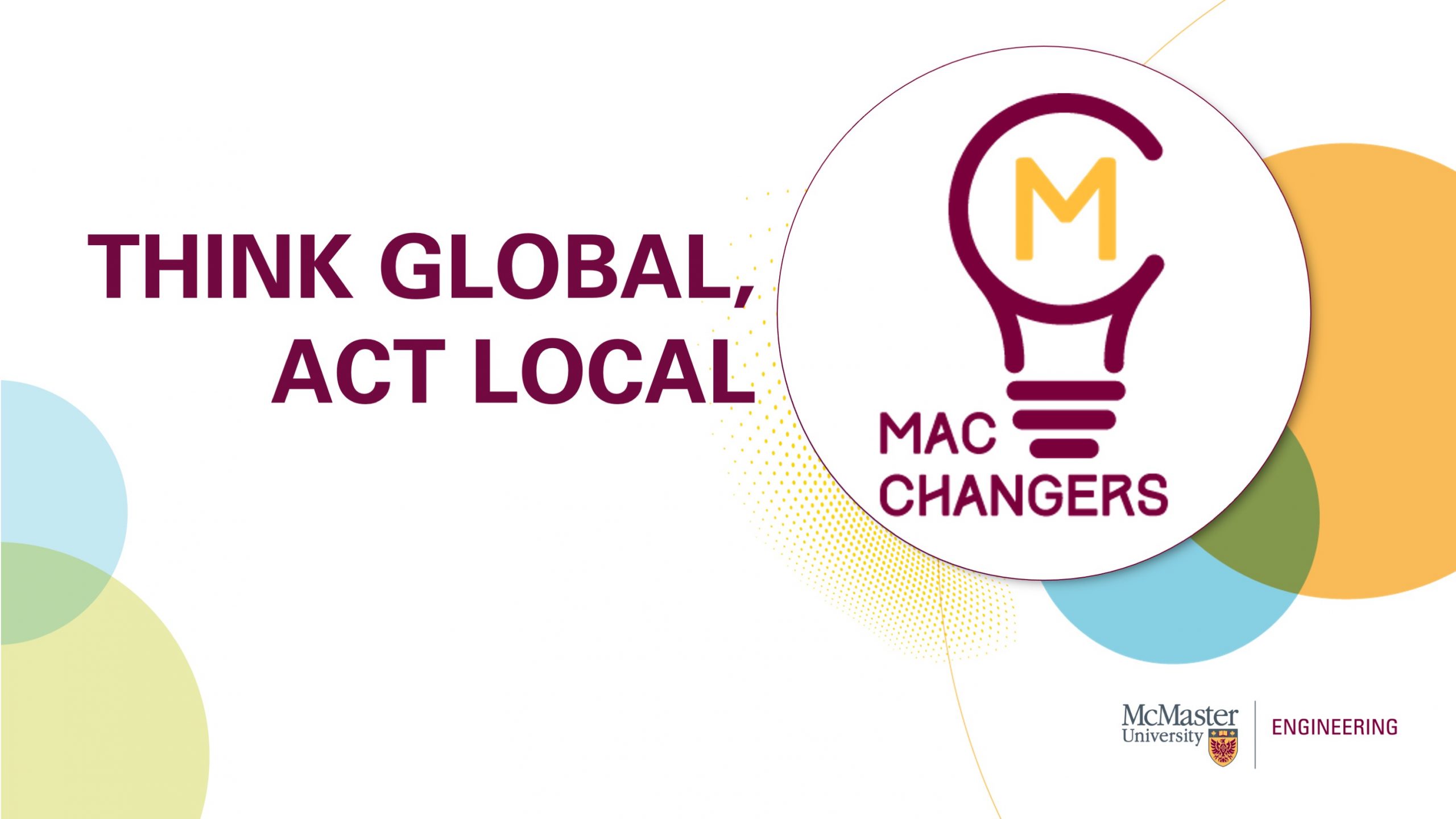
Welcome to the first module in our community-informed experiential short-duration learning experience! Today we will be discussing the global implications of your local problem solving.
Learning Objectives
By the end of this session you should be able to…
- Navigate and identify applications of the UN SDGs
- Identify and describe McMaster’s Principles of Community Engagement”
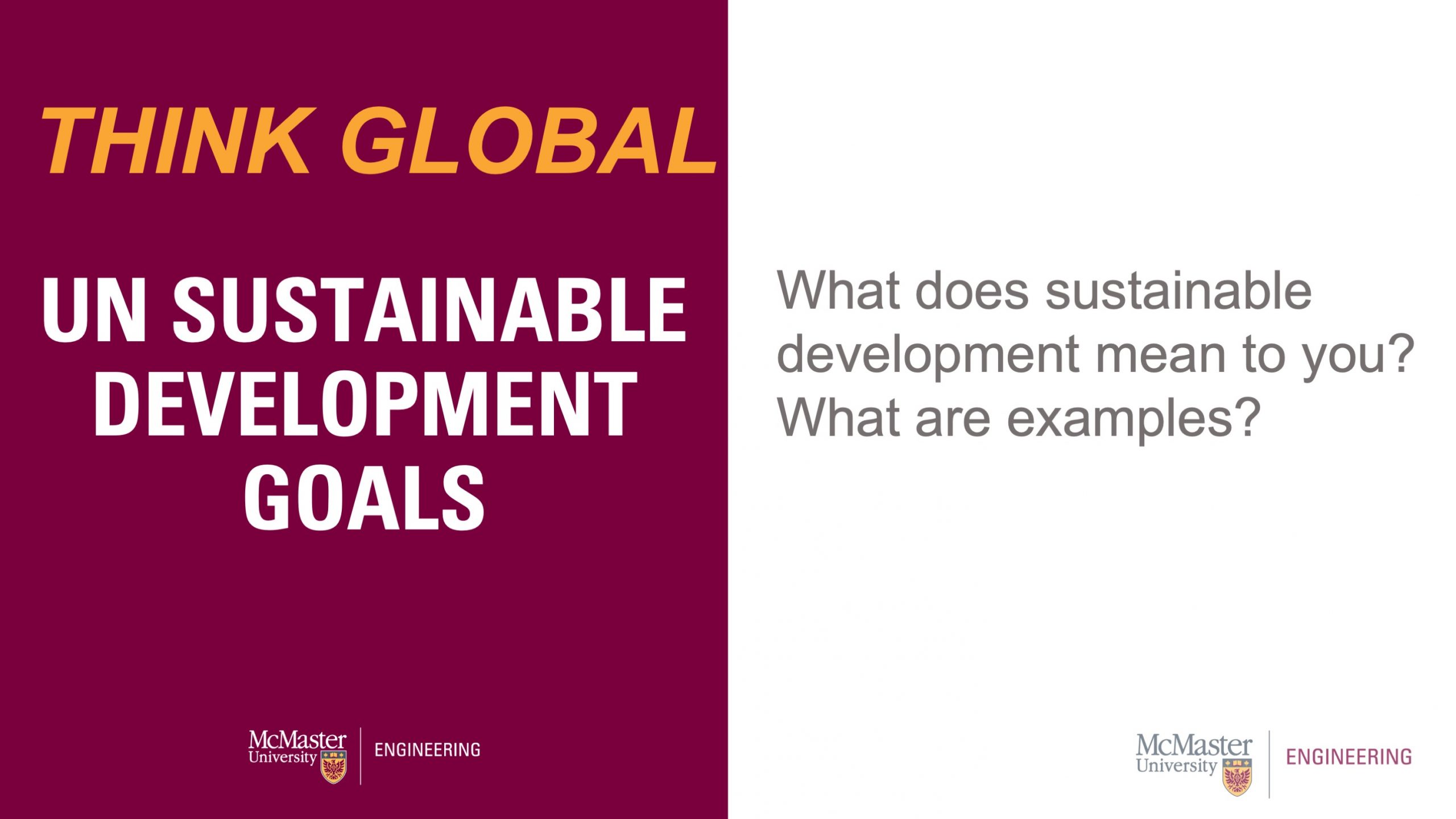
Take a moment to reflect on what the words sustainable development mean to you. Can you think of any examples where you see sustainable development in your neighbourhood? At your place of work or study? Are there any practices you engage that are unsustainable?
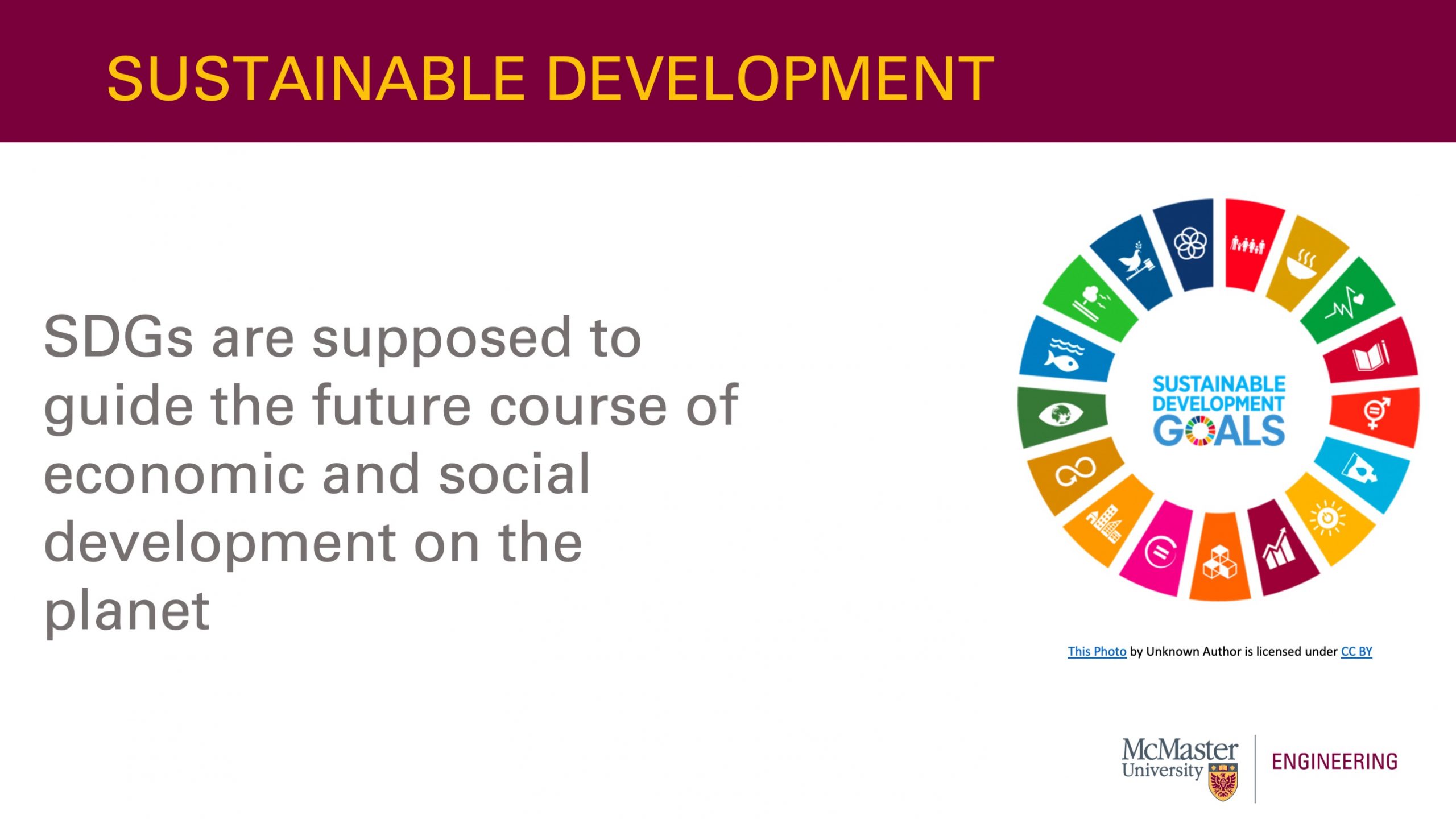
SDGs are goals that were established by the United Nations to be completed by countries and institutions by 2030. The SDGs are supposed to guide the future course of economic and social development on the planet and they encompass a wide range of different goals from ending poverty to encouraging healthy living to building sustainable urban infrastructure and engaging in responsible technological advancement.
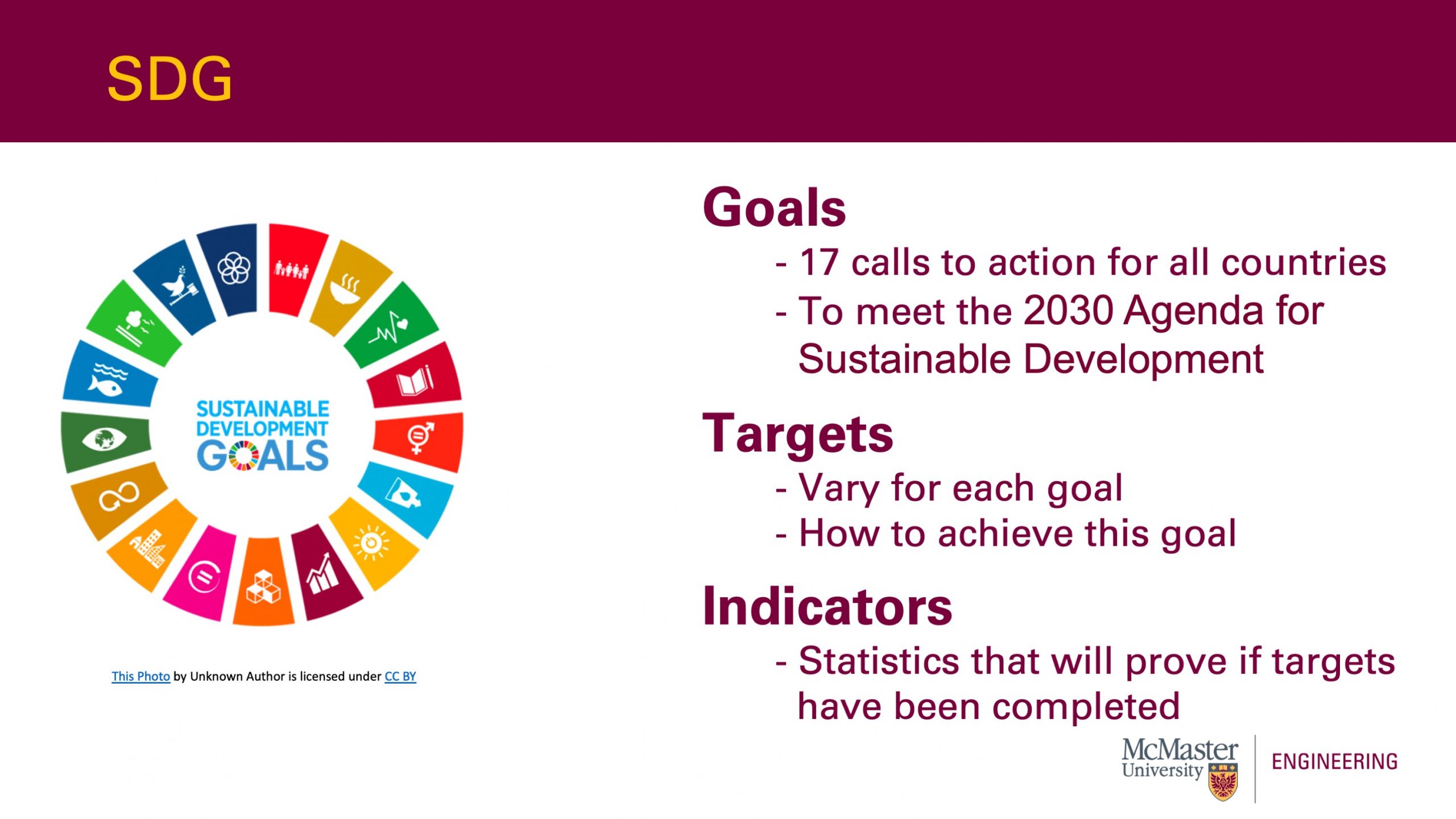
In total, there are 17 Sustainable Development Goals, often referred to as the SDGs, and these goals are calls to action for all countries. Under each goal there are specific targets. These are more specific, measurable objectives that countries can strive to meet in order to meet the overarching goal. Finally, SDG indicators are essentially accountability measures that can mark national and collective progress towards achieving these goals.
For example, SDG Goal #10 is “Reduced Inequalities.” Target 10.1 states, “By 2030, progressively achieve and sustain income growth of the bottom 40 per cent of the population at a rate higher than the national average.” The indicator for target 10.1 is “growth rates of household expenditure or income per capita among the bottom 40 per cent of the population and the total population.”

Now that you understand more about the Sustainable Development Goals, we invite to complete this quiz by Gapminder: Gapminder Misconceptions Quiz.
Completing this quiz will demonstrate to you that while many of the problems associated with the Sustainable Development Goals are well-known to the general public, the details of these problems are actually not well-known at all. The Gapminder Quiz is a great resource for reminding ourselves to consider our biases.
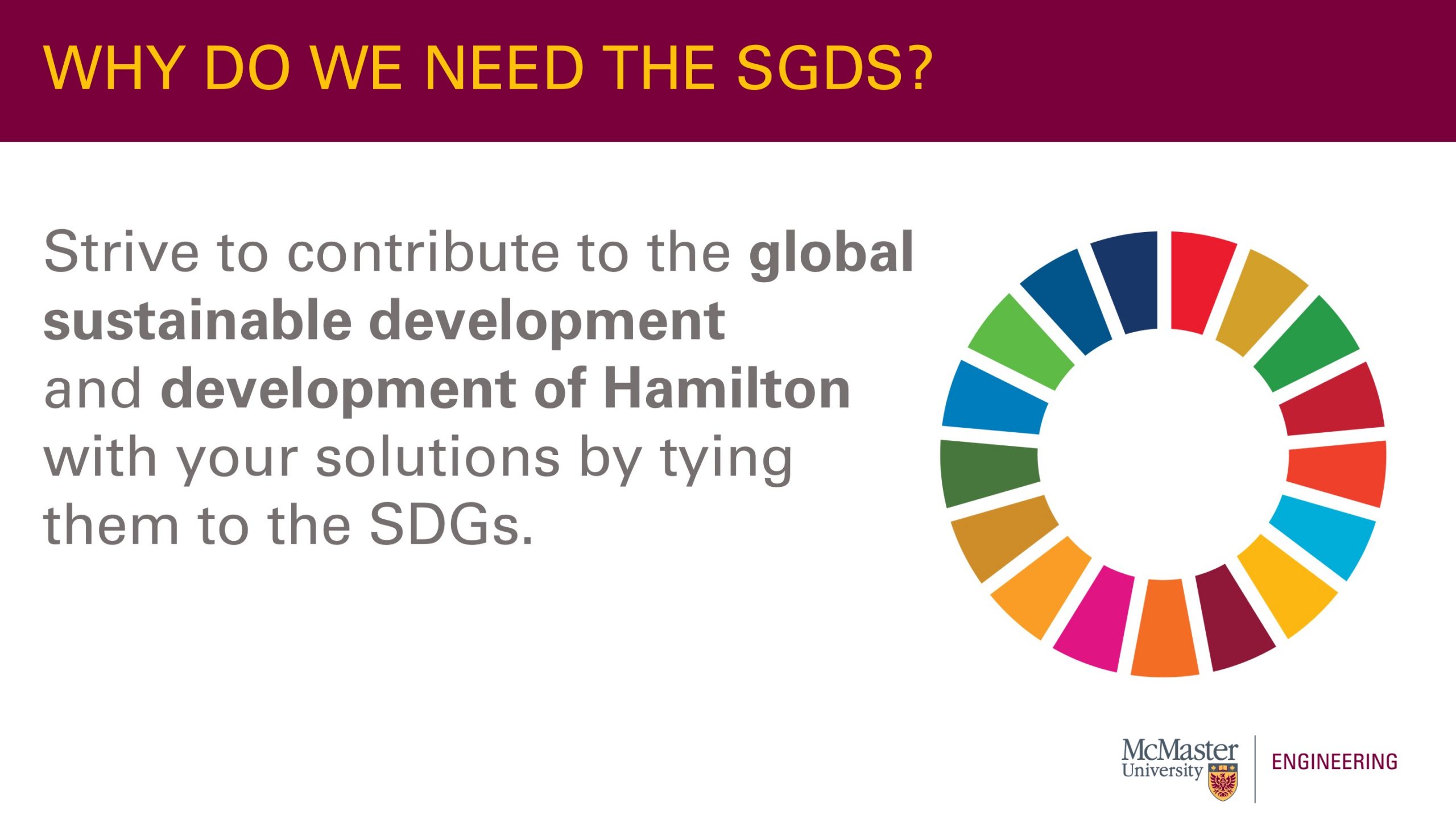
As you work through the challenges you are posed throughout this program, tie them back to the UN SDGs. Consider what opportunities you have to contribute to the global effort surrounding the SDGs. Alternatively, you can use the SDGs as a jumping off point to see what opportunities for improvement could be implemented in your community. Aligning your ideas to the SDGs means being part of a larger movement of like-minded individuals, and an idea you create wherever you are right now could end up being shared globally one day.
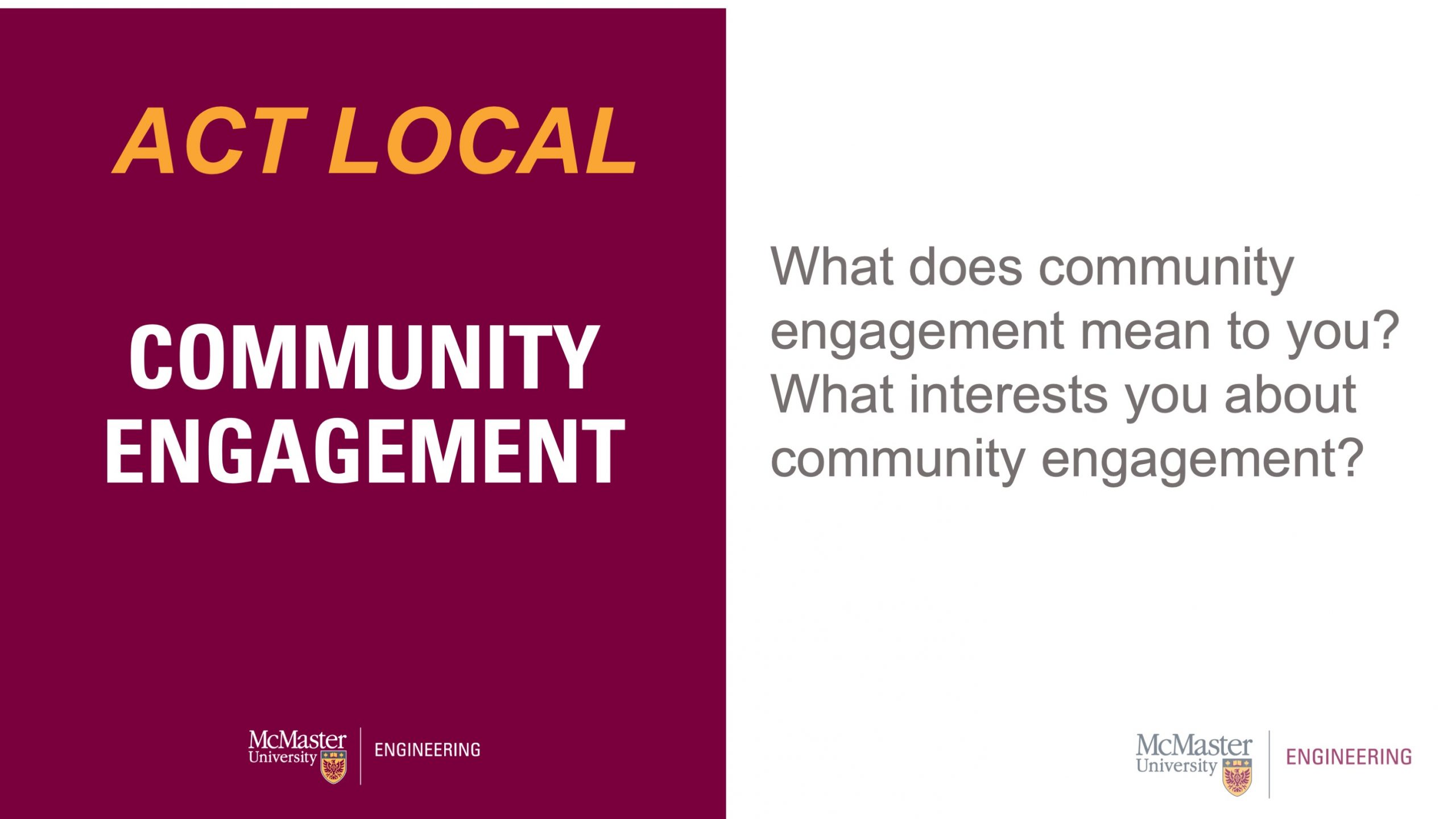
Now that we gotten a taste for the global community trying to solve international challenges, we need to turn our attention to learning how to support our local community. Before we begin, consider what community engagement means to you. What prior community engagement experiences have you had? What interests you about getting involved with your community?
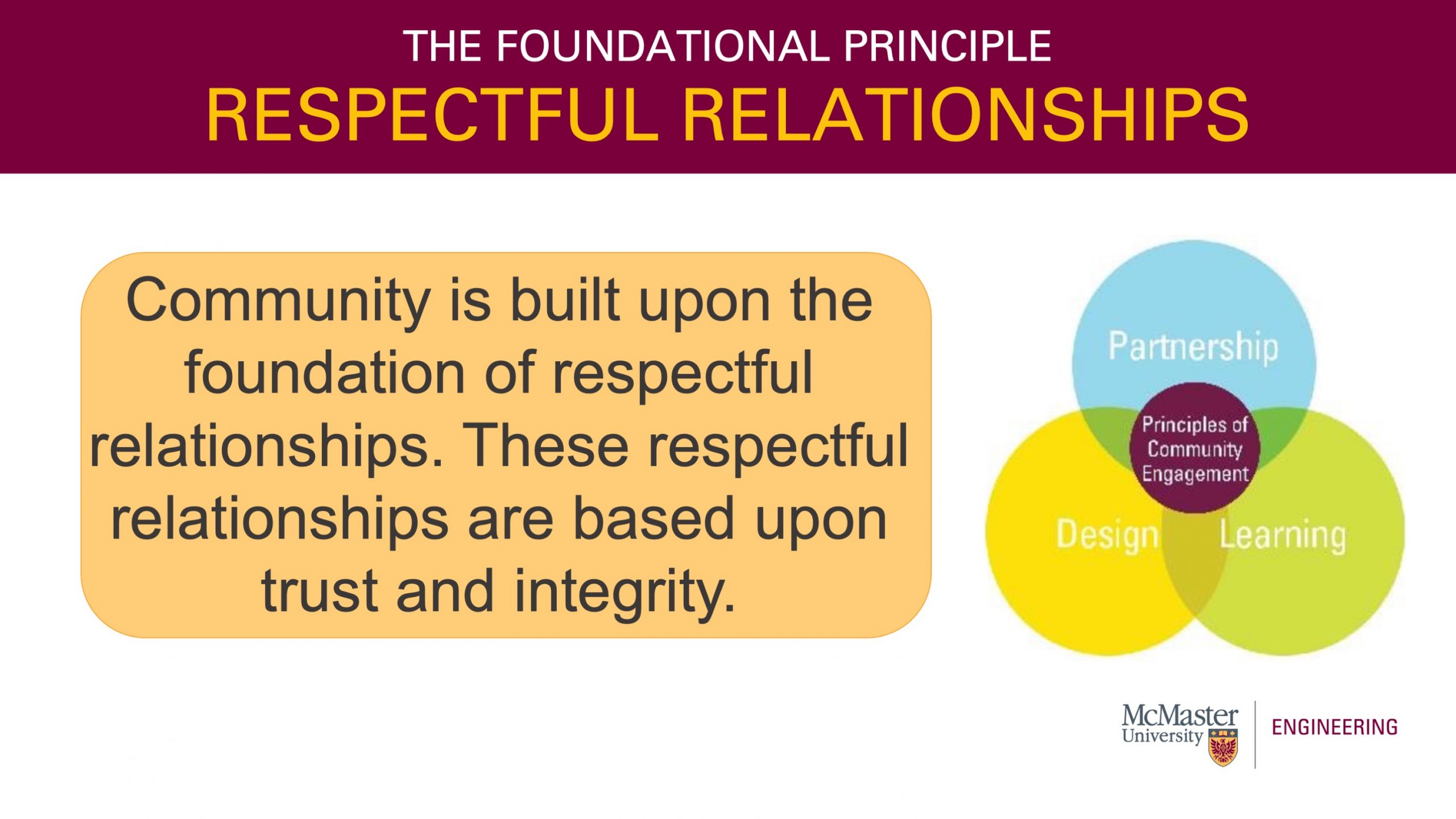
When you start to become involved with the community, or really when it comes to building any sort of relationship, you need to build trust. A respectful relationship is built upon trust and integrity. We will soon be discussing principles of community engagement, but underlying every principle is the understanding that community engagement is relationship building, and relationship building is based on trust.
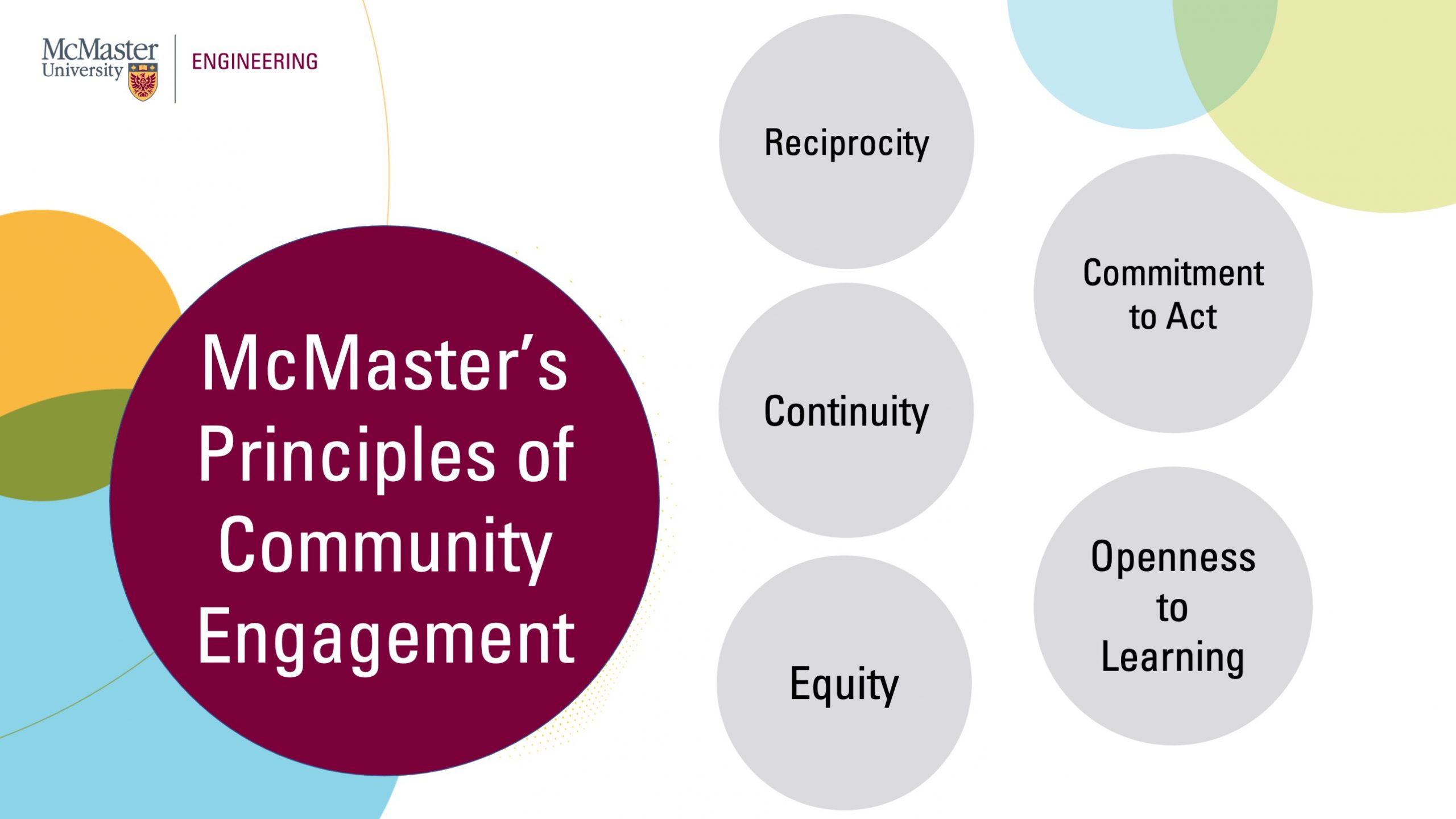
So, what are McMasters principles of community engagement? McMaster focuses on five main principles. And these are reciprocity, continuity, equity, commitment to act, openness to learn.
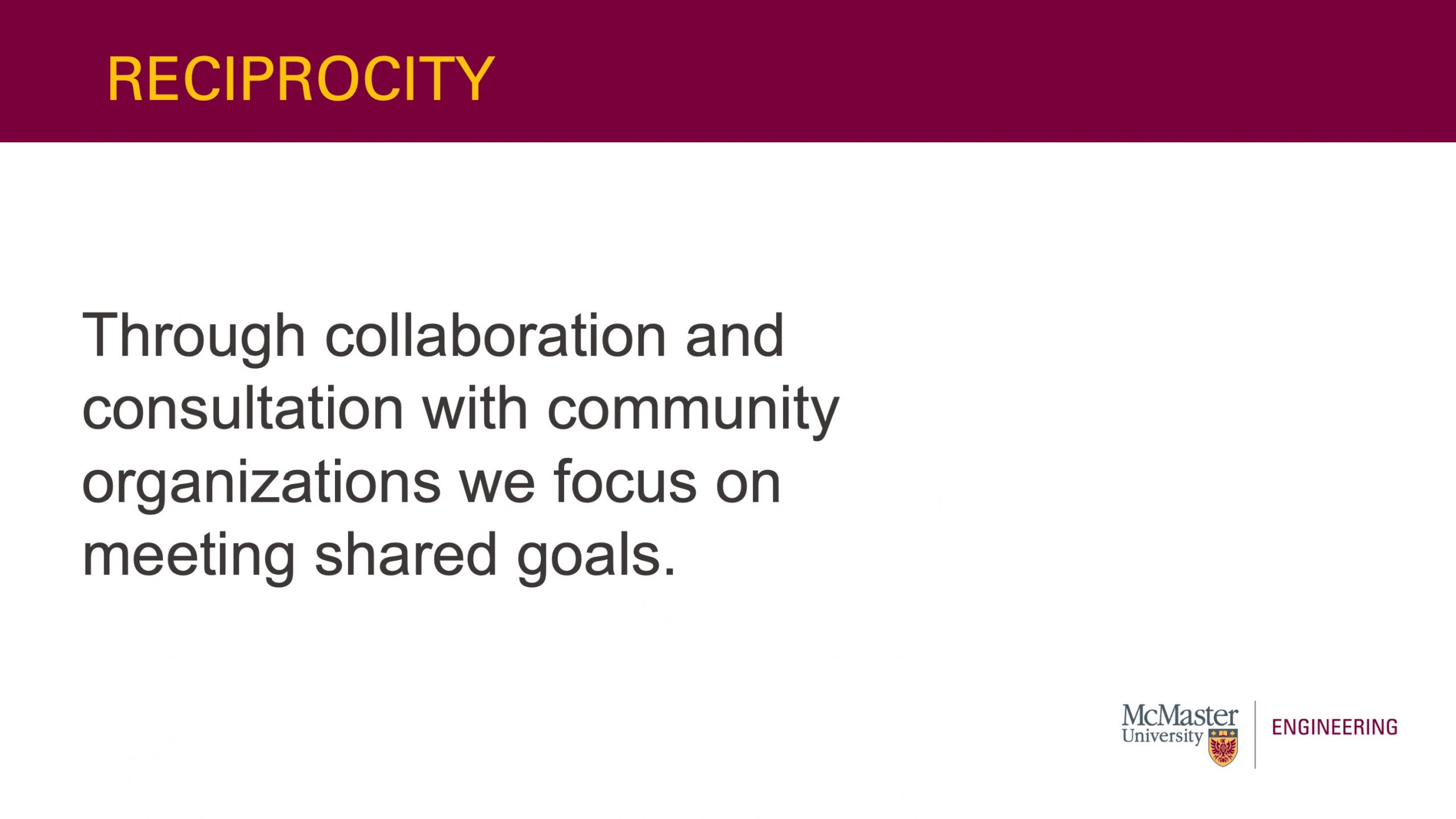
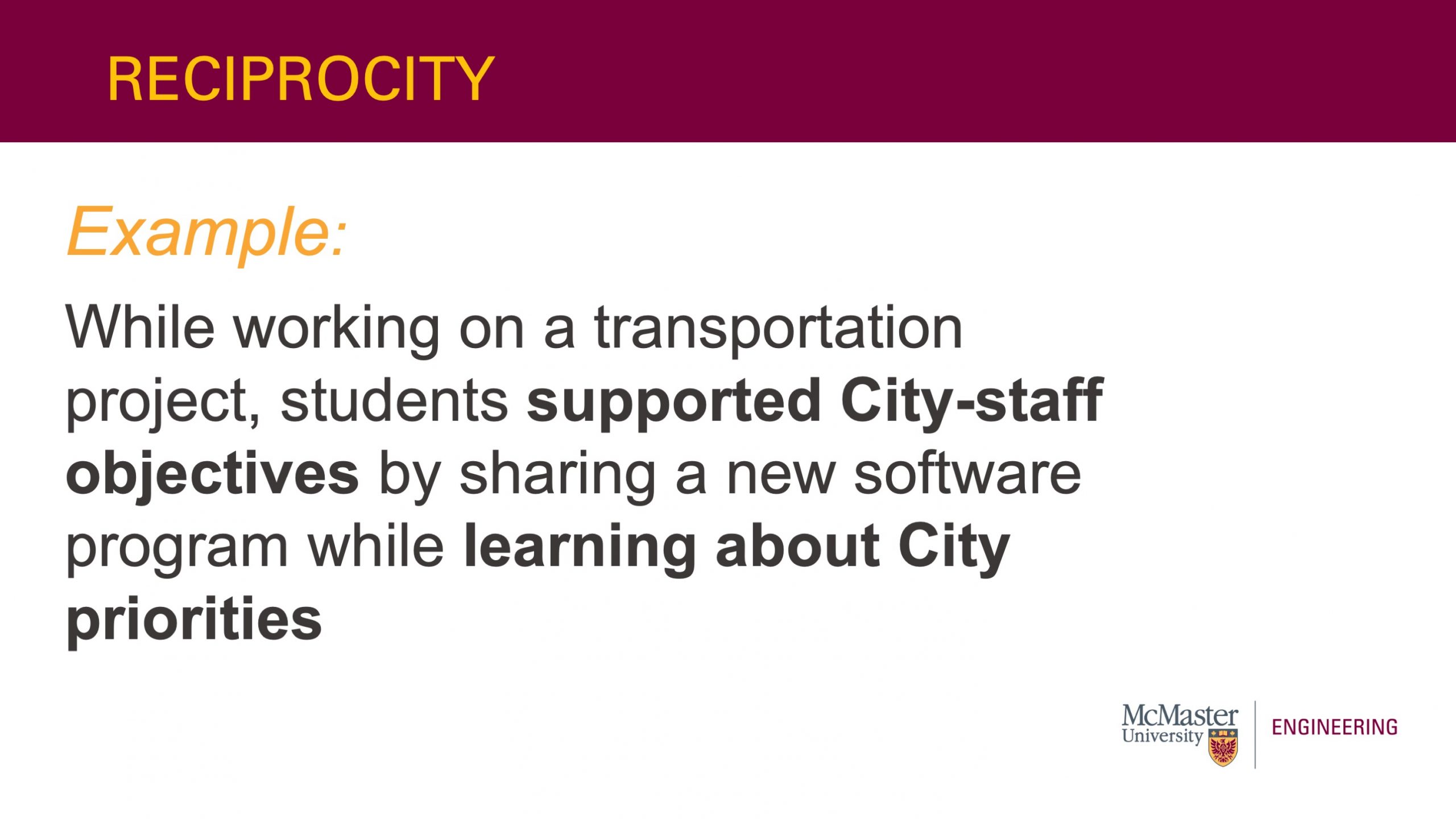
In this example of reciprocity, the students gains experience and exposure to real life work, the city gained a new software and the new optimized version to do a certain process. Both parties benefit from this interaction. If you are going to attempt community engagement, consider what you can offer and consider what your motivation is to get involved.
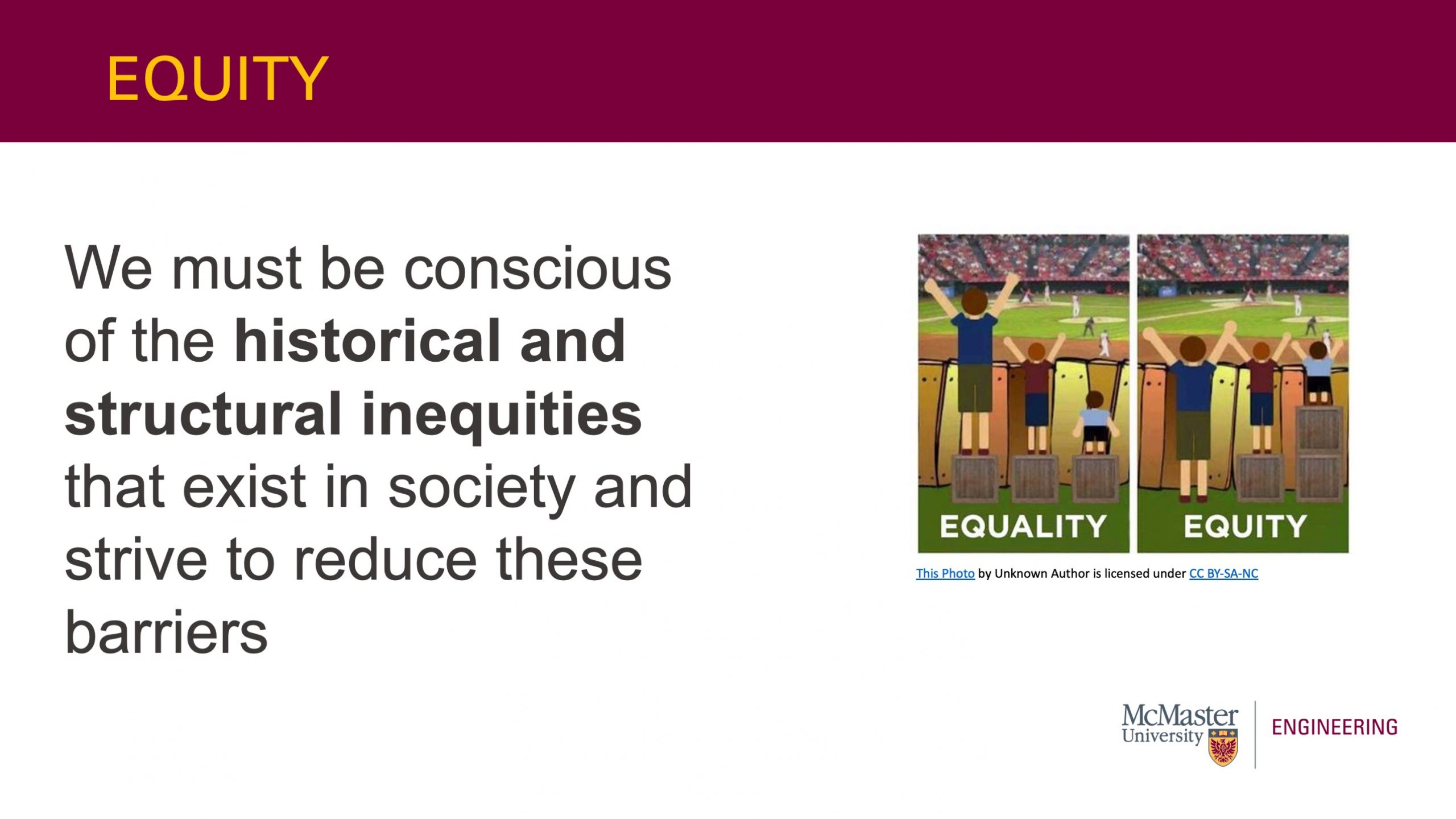
McMaster Community Engagement Principle 2: Equity.
Note that there is a difference between equality and equity. As you can see, in the image above, there are three people watching a baseball game. These three people are of different heights and they are all watching the game behind a fence. In an equitable approach, all three people are given a box to stand on in order to see over the fence. However, this box is not necessary to give the tallest person, who’s view was never obstructed. The box is also of insufficient height to help the shortest person, whose view is still obstructed. The medium-height individual benefits appropriately from receiving the box and can now see over the fence. This image is meant to demonstrate that offering an equal approach to these three we’re equal between all of them, they still might, it still might not lead to the desired outcome from everyone involved.
Equity, on the other hand, focuses on creating equal opportunity and inclusion, even if the resources offered vary for each individual. In this scenario, the goal is for everyone to watch the game, which means offering the shortest person two boxes while the first individual does not receive a box. Everyone is able to watch the game.

An example of equity that exists in Hamilton, Ontario is in regards to our public transit. Through free tickets, people are able to attend events in the city as the city will de-monetize public transit to certain events. As a bonus, this initiative encourages community building and encourages people to choose the more environmentally sustainable option to attend local events.

McMaster Community Engagement Principle 3: Continuity. An example of continuity within a project might be passing along a community-focused project from one class to another in order to maintain a commitment to the community members involved.

McMaster Community Engagement Principle 4, “Openness to Learning”.
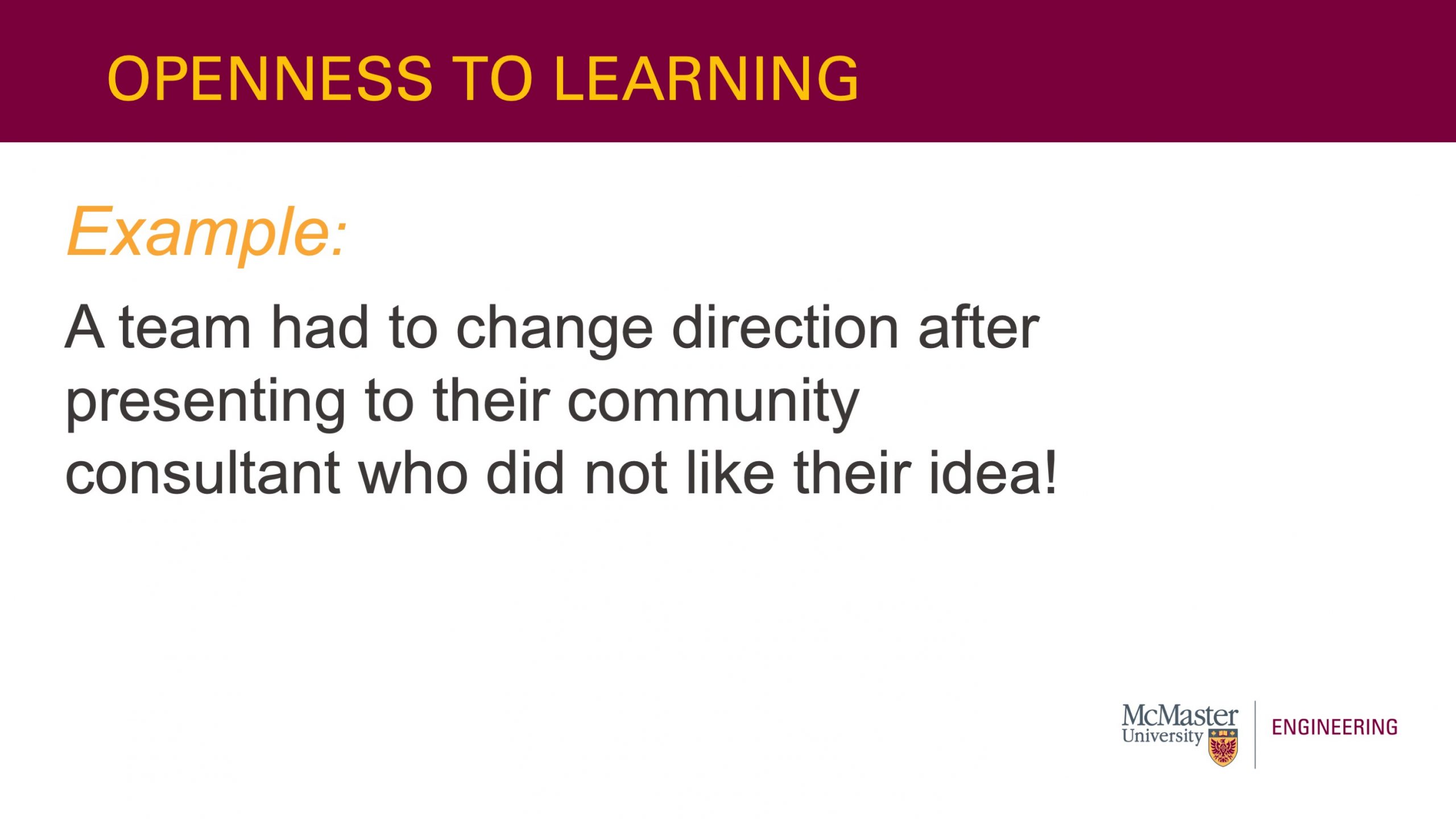
An example of openness to learning is entering situations with stakeholders with a willingness to be wrong or need to change tracks. Entering conversations with a mindset of learning and growth will allow you to hear the needs of the individuals with lived experience and expertise more freely.
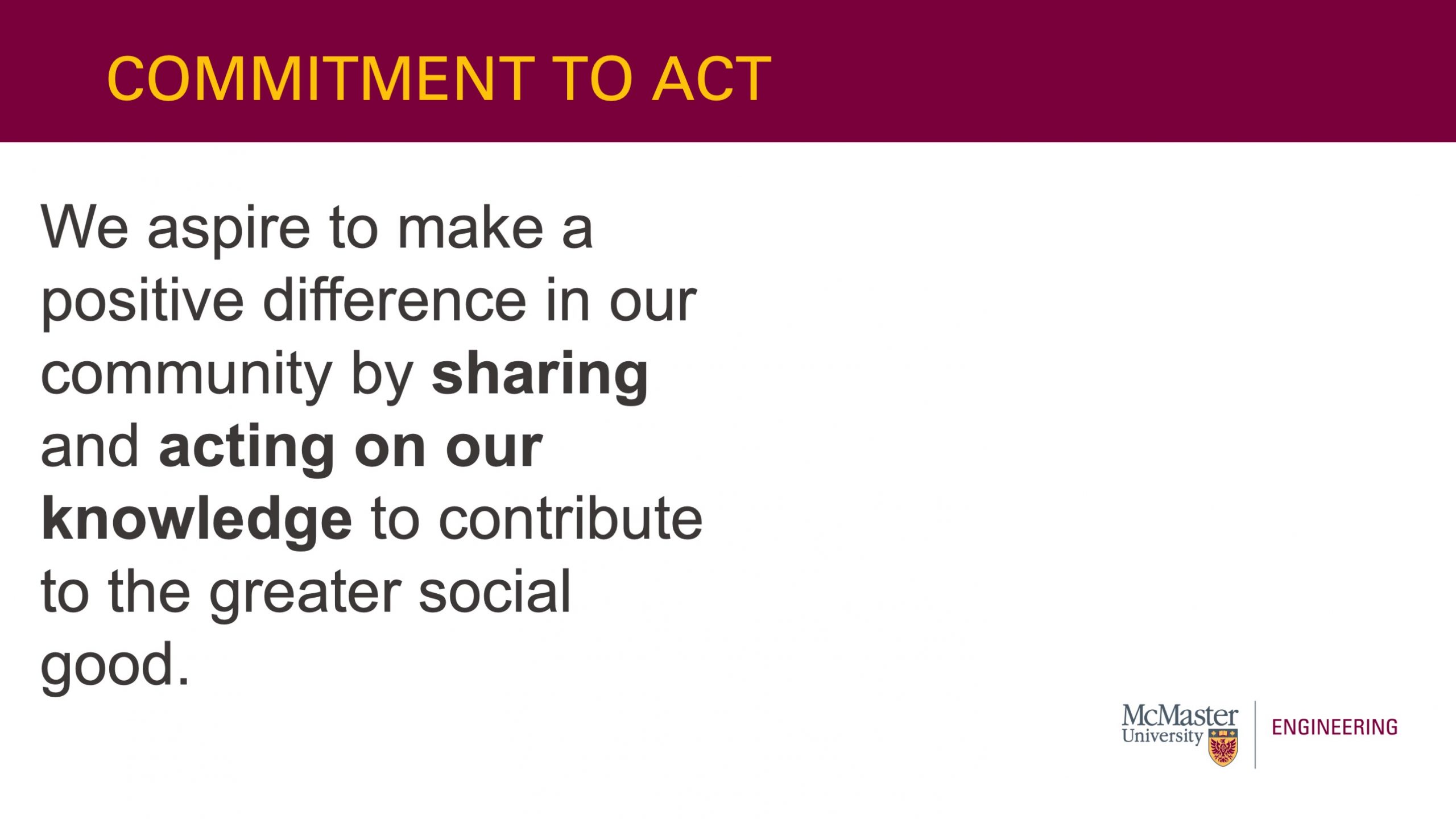
The fifth and final McMaster Principle of Community Engagement is a Commitment to Act.
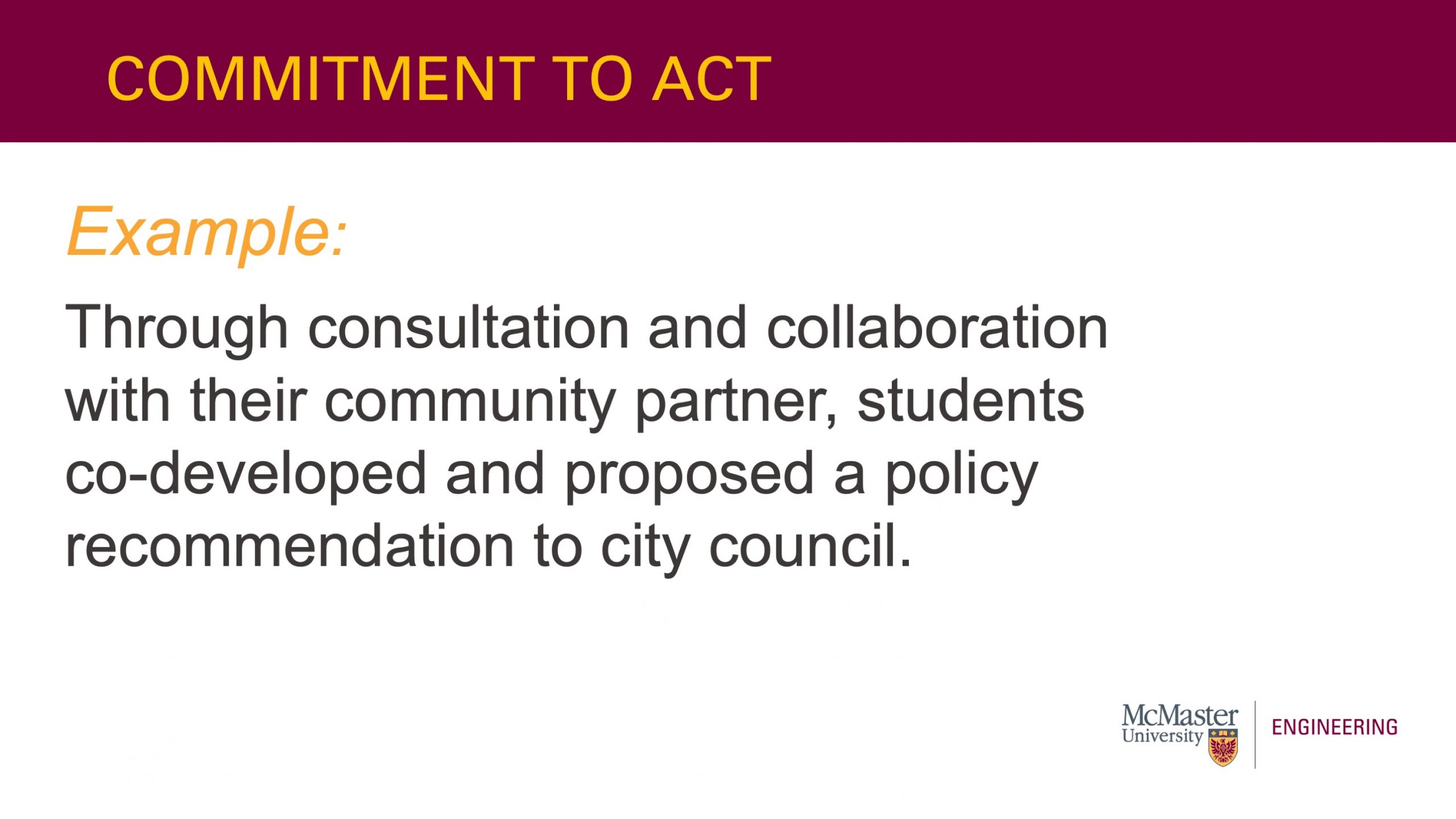
This example is of a well-scoped project that is carried through to completion. Commitment to act means creating feasible goals that benefit both parties, and then being accountable to that commitment during the entirety of your relationship together. As mentioned above, relationships are built on trust, and a commitment to act is one way that trust is built.
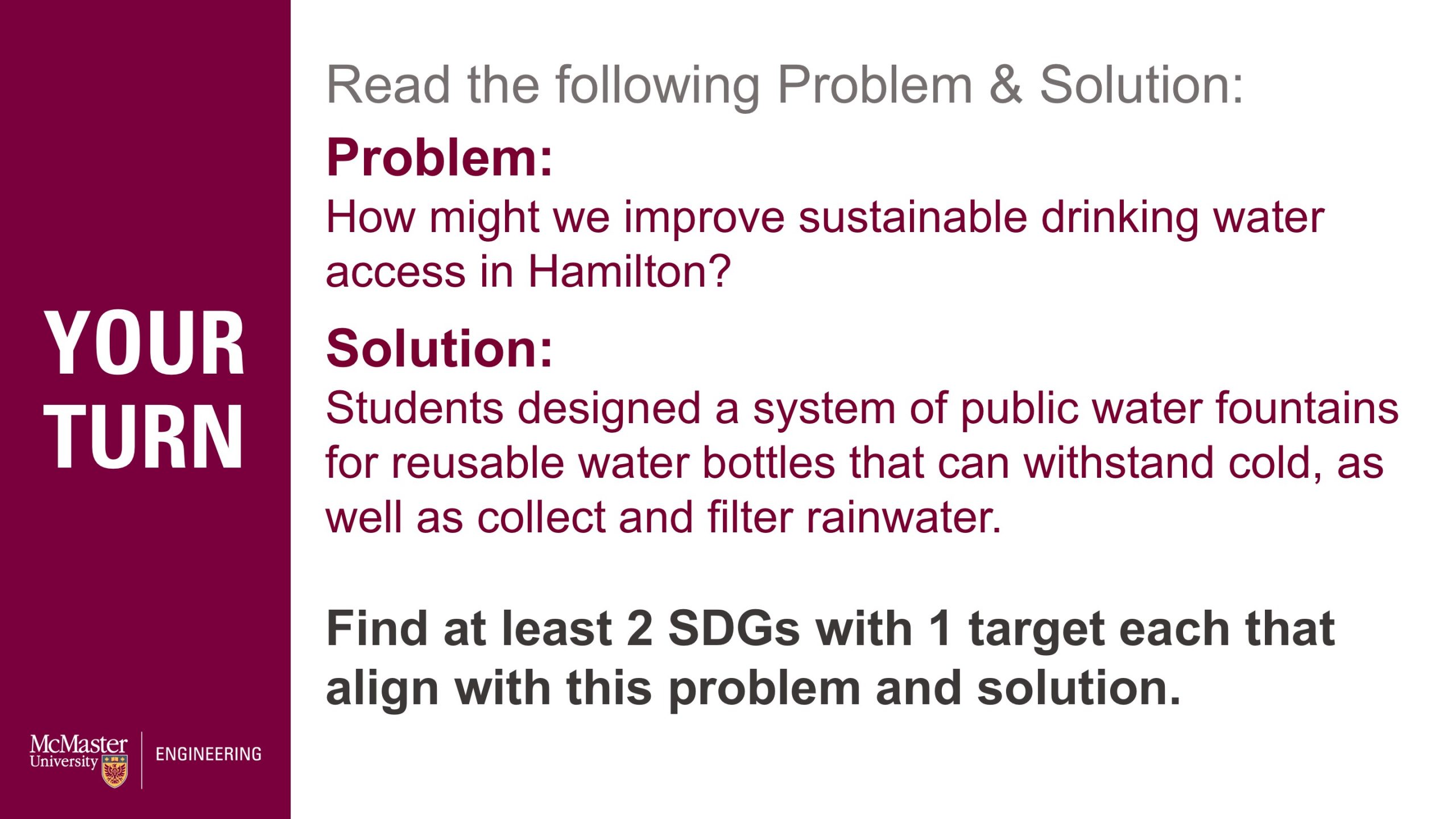
References
Defining EDI and Inclusive Excellence. (2022). McMaster Equity and Inclusion Office. https://equity.mcmaster.ca/strategy/towards-inclusive-excellence/edi-definitions/
Green, M. (2015) How we can make the world a better place by 2030. Youtube. https://www.youtube.com/watch?v=o08ykAqLOxk
Principles of Community Engagement. (2022). McMaster Office of Community Engagement. https://community.mcmaster.ca/about/strategic-priorities/principles-of-community-engagement/
United Nations. (2022). The 17 Goals. https://sdgs.un.org/goals

